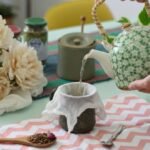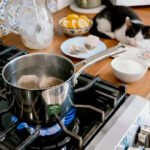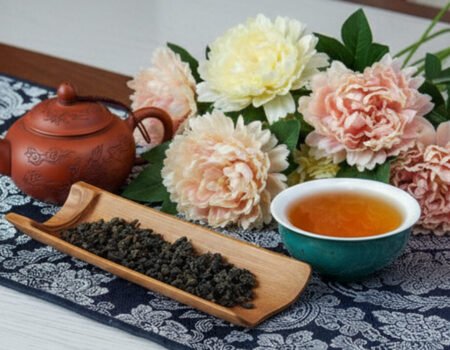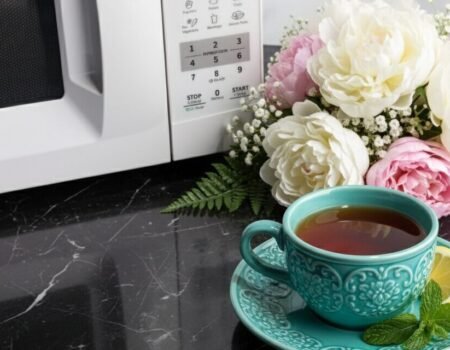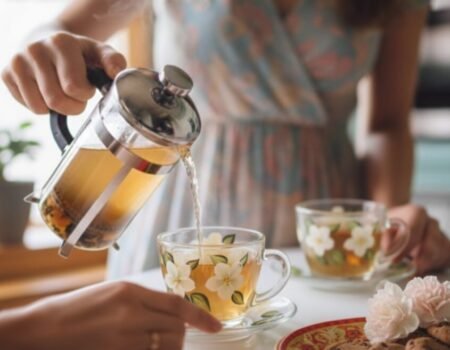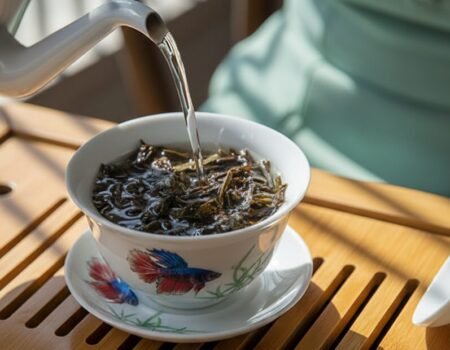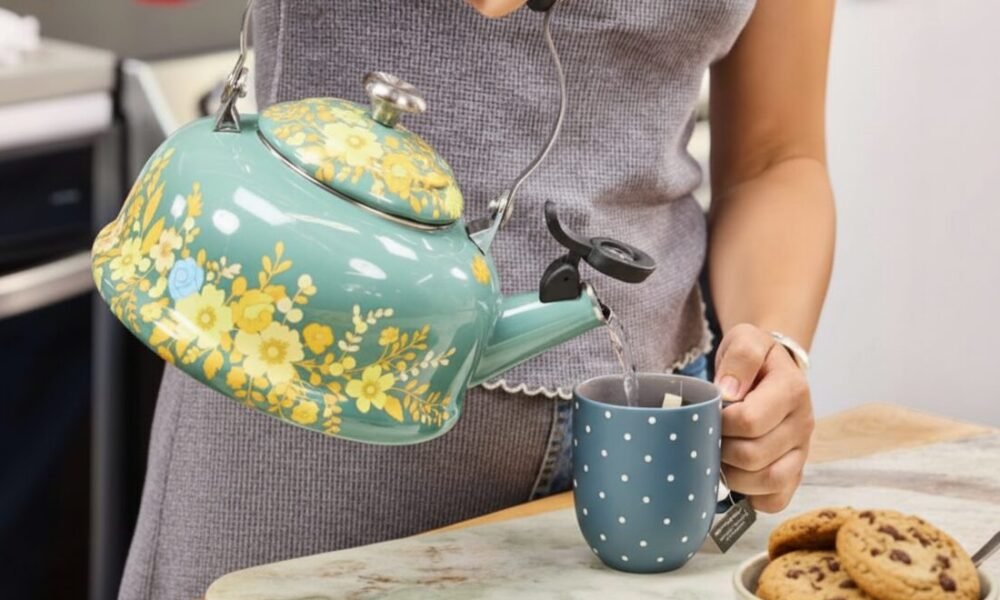
How to Brew Tea with a Kettle: A Simple Guide for Perfectly Brewed Tea
Index
Tea kettles have been used for centuries across cultures from China to India, with each region developing unique brewing methods. A good kettle helps you control water temperature, which is vital for different tea types.
In this guide, we’ll walk you through each step of brewing tea with both stovetop and electric kettles. You’ll learn the right water temperatures, steeping times, and how to use loose leaf tea or tea bags.
Key Takeaways
- Different teas need specific water temperatures – black tea requires 212°F (100°C) while green teas need 175°F to 180°F (79°C to 82°C) for best flavor.
- Clean your kettle regularly to prevent mineral buildup that can ruin tea taste; descale monthly with vinegar or lemon juice.
- Steep times vary by tea type – black tea needs 3-5 minutes, green tea only 2-3 minutes, and white tea just 1-2 minutes.
- Always use fresh, cold water rather than re-boiling water, as fresh water contains more oxygen for better flavor extraction.
- Loose leaf tea typically offers fuller flavor than tea bags, with the standard measurement being one teaspoon per 8-ounce / ~250 ml cup.
Preparing Your Kettle for Brewing
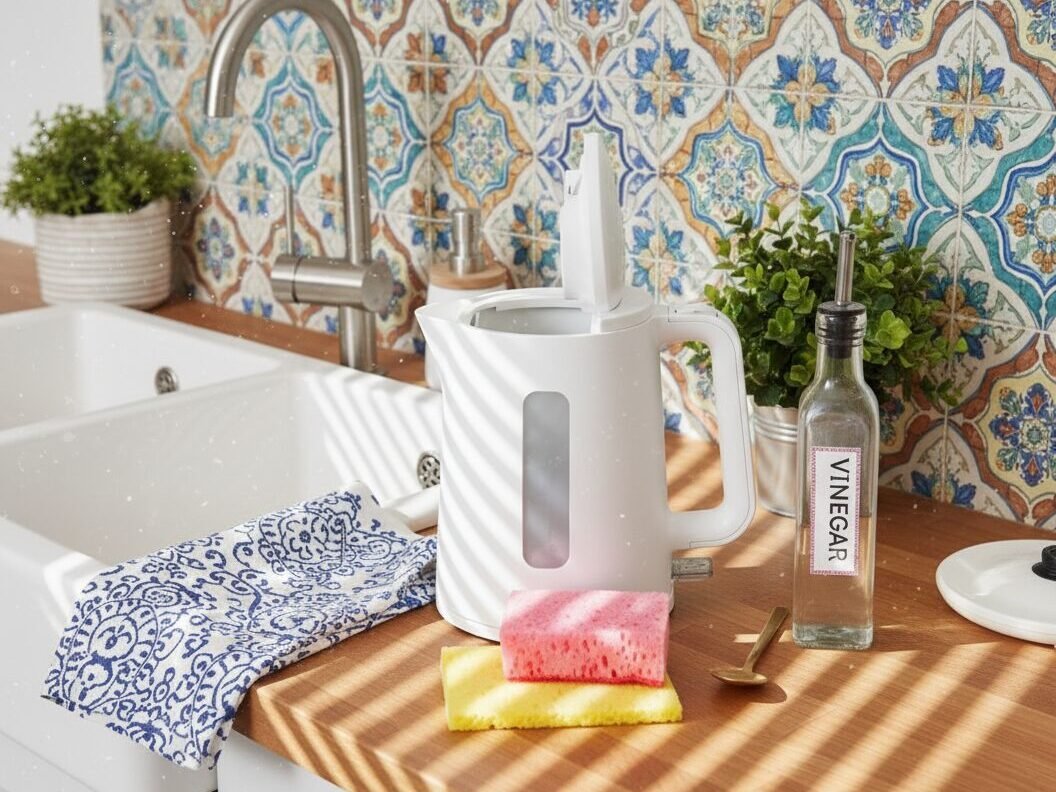
Preparing your kettle starts with a clean vessel and fresh water to brew the perfect cup. A clean kettle prevents mineral buildup that can alter your tea’s taste, while using fresh, cold water ensures the best flavor extraction from your tea leaves.
Clean your kettle
A clean kettle makes better tea. Start by washing your kettle with hot water and soap before your first use. This removes any manufacturing residues that might affect your tea’s flavor.
For daily maintenance, rinse the kettle with fresh water after each use and wipe the exterior to prevent dust buildup.
Scale buildup happens in all kettles and can ruin tea taste. Descale your kettle once a month if you use it often. Mix 1 part vinegar with 3 parts water, boil this solution, then let it soak overnight.
You can also use lemon juice, citric acid, or baking soda as natural cleaners. Fresh water tastes best, so let’s look at how to fill your kettle properly for the perfect brew.
Fill the kettle with fresh water
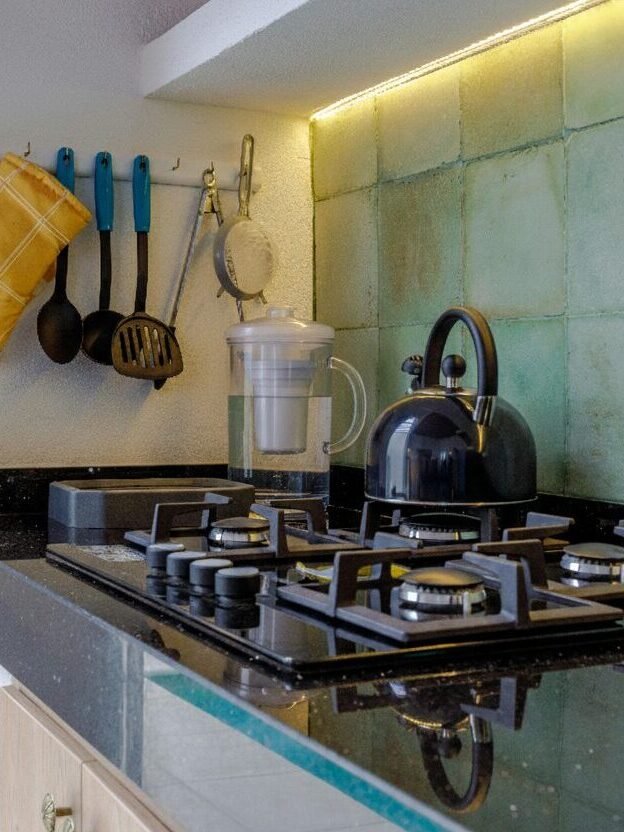
After cleaning your kettle, the next crucial step is adding water. Fill your kettle with fresh, cold water from your tap or filtered source. Fresh water contains more oxygen than previously boiled water, which helps extract better flavor from your tea leaves.
Never reuse water that has already been boiled, as it can make your tea taste flat.
Pour just enough water for the cups you plan to serve. Overfilling wastes energy and extends heating time. Most kettles have measurement marks on the inside to guide you. For electric kettles, check the minimum and maximum fill lines to ensure proper function.
Stovetop kettles work best when filled to about two-thirds capacity, leaving room for steam to collect in the upper portion.
Heating the Water
Getting the right water temperature marks the difference between a perfect cup and a bitter mess. Each tea variety demands its own ideal heat level, from delicate white teas at lower temps to robust black teas at full boil.
Correct water temperatures for different types of tea
Water temperature plays a crucial role in brewing tea. Different tea types require specific temperatures to extract their best flavors without bitterness or flatness. The right heat brings out delicate notes in lighter teas while fully developing the robust character of darker varieties.
| Tea Type | Temperature Range | Visual Indicators |
|---|---|---|
| Black Tea | 212°F (100°C) | Full rolling boil |
| Green Tea | 175°F to 180°F (79°C to 82°C) | Shrimp eye bubbles (tiny bubbles) |
| White Tea | 165°F to 185°F (74°C to 85°C) | Wisps of steam to small bubbles forming |
| Light Oolong (Greener) | 175°F to 185°F (79°C to 85°C) | Small bubbles forming |
| Dark Oolong (Browner) | 190°F to 200°F (88°C to 93°C) | Fish eye bubbles (medium bubbles) |
| Pu-erh Tea | 200°F to 212°F (93°C to 100°C) | Near or at full boil |
| Herbal Tea | 212°F (100°C) | Full rolling boil |
| Darjeeling (Delicate Black) | 185°F to 200°F (85°C to 93°C) | Fish eye bubbles (medium bubbles) |
Following these temperature guidelines enhances the flavor profile of each tea variety. Too hot water can scorch delicate leaves, while water that’s not hot enough fails to extract the full range of flavors. Modern kettles often include temperature controls, but traditional brewing relies on visual cues from the water’s surface bubbles.
How to Brew Tea with Boiling Water
Boiling water forms the foundation of excellent tea brewing. The right temperature and technique make all the difference between a perfect cup and a bitter disappointment.
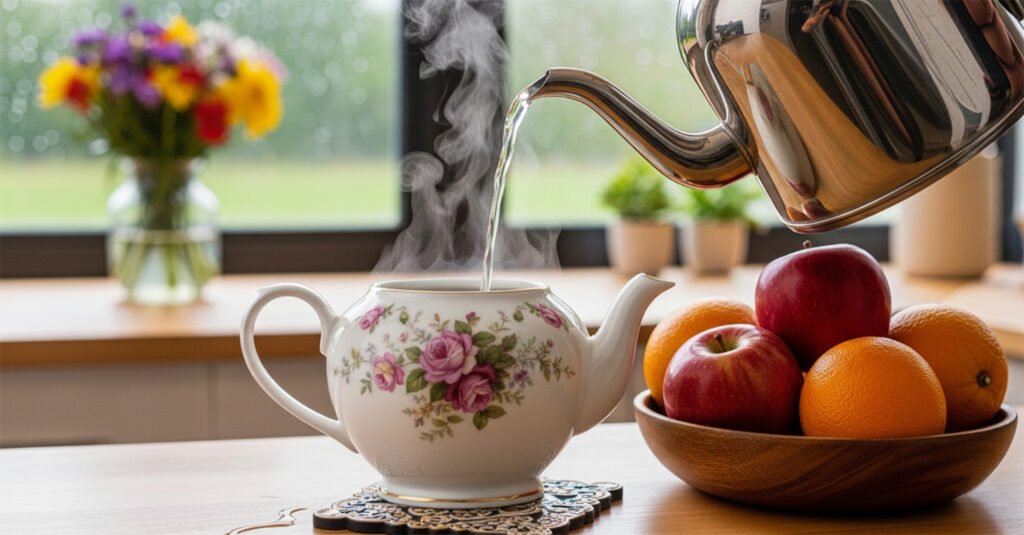
Preparing Your Water
- Heat water to the proper temperature for your tea type – black and herbal teas need 212°F / 100°C for full flavor extraction
- Remove the kettle from heat once it reaches a rolling boil with vigorous bubbles and steam pouring from the spout
- For delicate teas, let boiling water cool slightly before pouring – green tea leaves burn in water that’s too hot, creating bitter flavors
Setting Up Your Tea
- Pour water directly into your teapot or cup containing tea to activate the tea compounds and begin steeping
- Measure exactly 1 teaspoon of loose leaf tea for every 6 ounces / 175 ml of water – this ratio creates perfect strength without waste
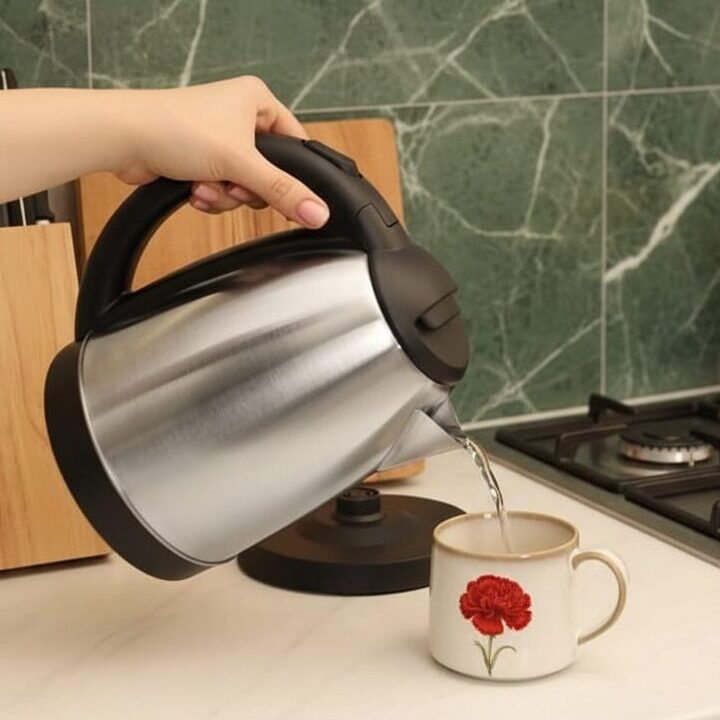
Steeping Your Tea
- Cover your tea while steeping to trap heat and essential oils using a lid or small plate
- Time your steep carefully based on tea variety – black tea needs 3-5 minutes for full flavor development
Finishing Your Perfect Cup
- Remove tea leaves promptly after steeping finishes to prevent over-extraction and bitterness
- Strain loose leaves without an infuser using a fine mesh strainer to catch all particles for a smooth drink
- Serve immediately while hot for the best taste – freshly brewed aromas and flavors peak right after brewing
Now that you know how to brew with boiling water, let’s explore the perfect steeping times for different tea varieties.
Brewing the Perfect Cup of Tea
Brewing the perfect cup of tea combines science and art in equal measure. The right steeping time and water temperature will transform your tea leaves into a flavorful drink that delights your senses.
Steeping times for various teas
The perfect cup of tea depends greatly on how long you let it steep. Each tea variety has its own ideal steeping time that brings out its best flavors without releasing too much bitterness or tannins.
Time your steep carefully using a kitchen timer for consistent results. Short steeps yield subtle flavors while extended steeping creates bolder cups. Many tea enthusiasts find that a taste test at different intervals helps identify personal preferences.
Using loose leaf tea or tea bags
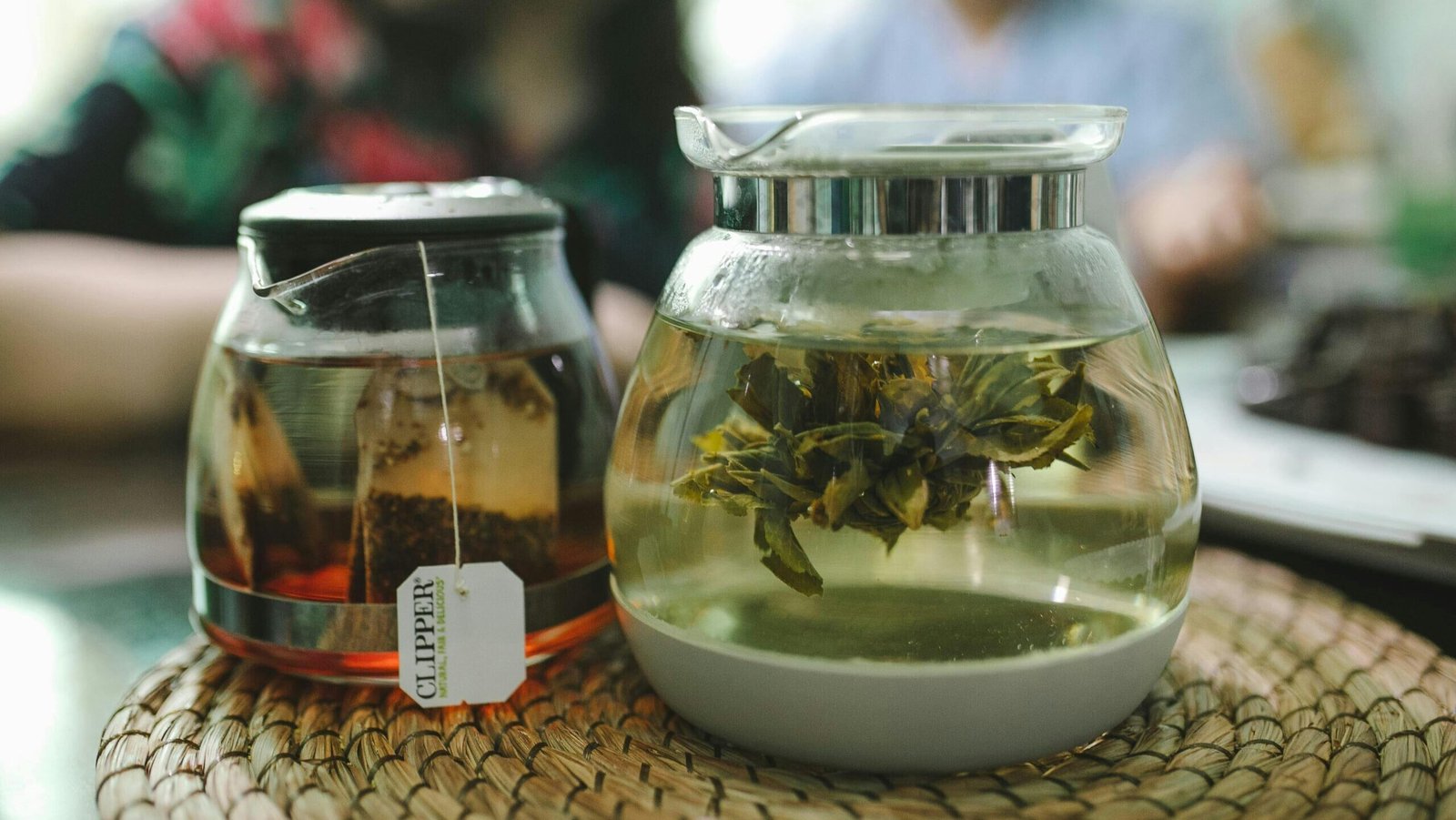
Loose leaf tea gives you a fuller flavor compared to tea bags. You’ll need about one teaspoon of loose leaves for each 8-ounce / ~250 ml cup of water. This method puts you in control of your brew strength and aroma.
Tea infusers or filters help contain the leaves while they steep in hot water.
Tea bags offer speed and simplicity for busy mornings. They contain pre-measured amounts of tea, making brewing quick and cleanup easy. For the best results with either method, store your tea in an airtight container away from light.
Fresh tea should be used within a year for optimal taste. Both loose leaf and bagged teas work well for making hot or iced beverages.
Tips for Enhancing Your Tea Brewing Experience
Your tea can taste even better with a few simple tweaks to your brewing method. The right kettle and proper care will make all the difference in your daily tea ritual.
Choosing the right kettle
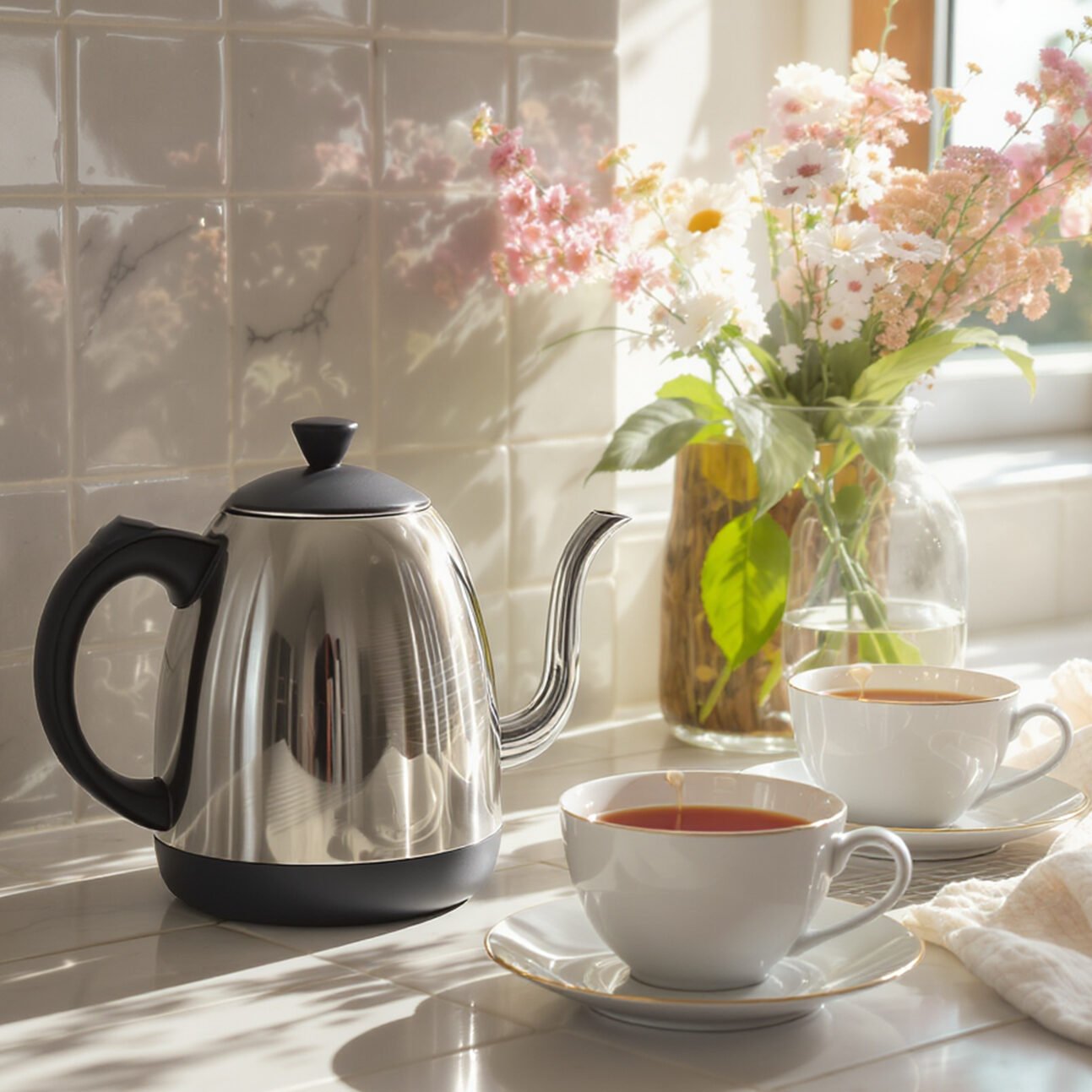
Selecting a perfect kettle makes a big difference in your tea brewing experience. Stainless steel kettles offer durability and clean flavor, while glass models let you watch the water boil.
Cast iron kettles retain heat longer but require more care to prevent rust. Electric kettles with temperature control features help brew different types of tea at their ideal heat levels.
Green tea tastes best at 175°F / 79°C, while black tea needs 212°F / 100°C for full flavor extraction. The wrong temperature can make your tea bitter or weak.
Gooseneck kettles provide precise pouring control, which matters for loose leaf teas that need gentle, even water distribution. Whistling kettles signal when water reaches a full boil, saving you from constant checking.
Consider your brewing habits too – if you make a lot of tea daily, a larger capacity kettle saves time. For small kitchens, compact electric models heat water faster than stovetop versions and use less counter space.
The best kettle matches both your tea preferences and practical needs.
Maintaining your kettle for longevity
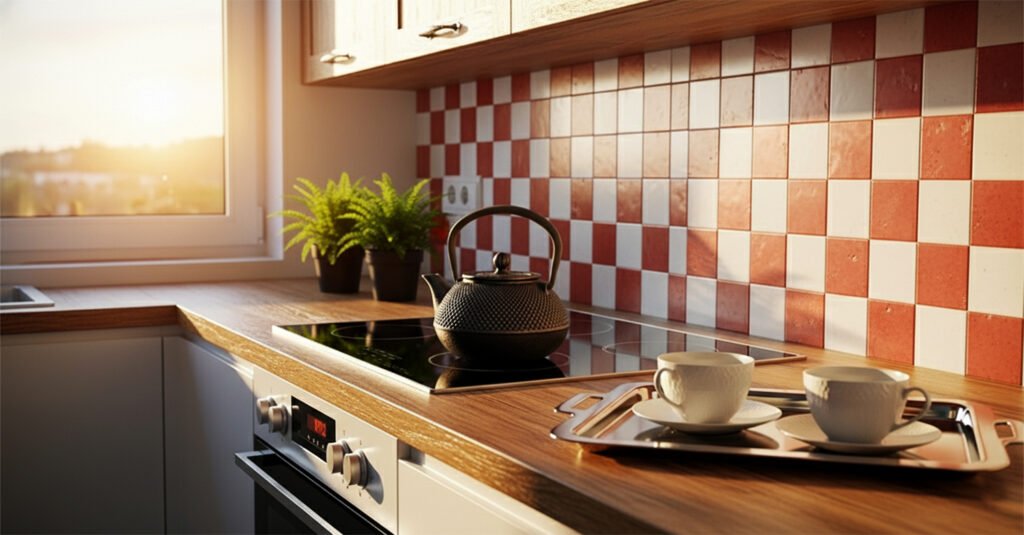
Once you’ve selected the perfect kettle, proper maintenance will extend its life and keep your tea tasting great. Regular cleaning prevents mineral buildup and bacteria growth that can affect both your kettle’s performance and tea flavor.
For stovetop kettles, wash with soap and hot water after each use, and always empty remaining water to prevent rust formation. Electric kettles need regular descaling to remove mineral deposits, especially in hard water areas.
Most manufacturers recommend a simple vinegar solution or commercial descaling product every few months.
Your kettle should only heat water, never brew tea directly inside it. This single-purpose use protects the heating element in electric models and prevents flavor contamination in all kettles.
Limescale buildup not only affects taste but also reduces heating efficiency, making your kettle work harder and shortening its lifespan. By following these simple care steps, your tea kettle will serve you well for many years, ensuring countless perfect cups of hot tea.
Conclusion
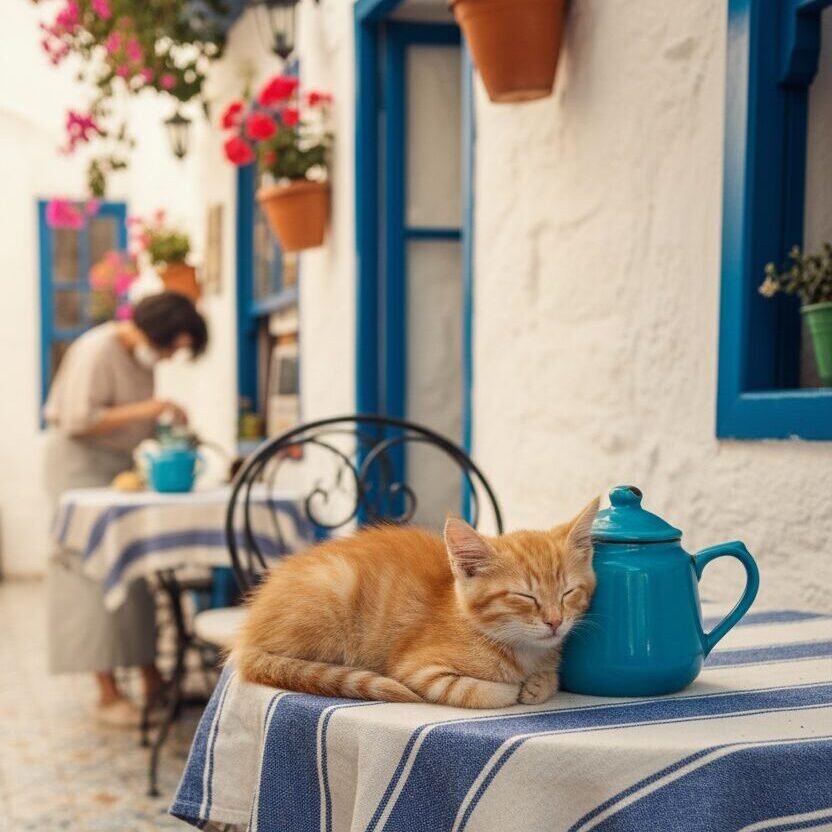
Brewing tea with a kettle brings out the best flavors in your favorite leaves. You now have the steps to heat water to the right temperature for each tea type. Green teas need cooler water while black teas can handle full boiling.
Clean kettles, fresh water, and proper steep times make all the difference in your cup. Whether you choose a stovetop model or an electric kettle with temperature control, the perfect brew awaits.
Your tea journey starts with these simple steps that honor centuries of tradition while fitting into modern life.
FAQs
1. How do I use a tea kettle to make tea?
Fill your kettle with fresh, cold water. Heat the water to the correct temperature for your specific type of tea (e.g., a full boil for black tea, but cooler for green tea). Once the water reaches the right temperature, carefully pour it over your tea leaves or tea bag and let it steep.
2. What’s the difference between a stovetop tea kettle and an electric tea kettle?
Stovetop tea kettles need an external heat source like a gas or electric cooktop to boil water. Electric tea kettles plug into a power outlet and boil water using a built-in heating element, which is often faster.
3. How much water should I put in my kettle?
Only add the amount of water you need for the number of cups you are brewing. Using more water than needed wastes energy and takes longer to heat.
4. Do different types of tea require different water temperatures?
Yes, absolutely. Black and herbal teas generally require water at a full boil (212°F / 100°C), while more delicate green and white teas taste best when brewed with cooler water. Many electric kettles have temperature settings to help with this.
5. How do I brew loose leaf tea with a kettle?
Heat water in your kettle to the correct temperature for your specific tea type. While it heats, place your loose tea leaves in a teapot or a tea infuser. Pour the heated water over the leaves and let it steep for the recommended time for that variety.
6. How do I clean my tea kettle?
For daily cleaning, rinse and wipe your kettle. To remove mineral buildup (scale), descale it monthly by boiling a solution of 1 part vinegar to 3 parts water and letting it sit for a while before rinsing thoroughly. For electric kettles, always follow the manufacturer’s guide and never submerge the base in water.
7. Why shouldn’t I re-boil water for tea?
It is best to use fresh, cold water for each brew. Fresh water contains more dissolved oxygen, which helps extract a fuller, better flavor from the tea leaves. Re-boiled water has less oxygen and can result in a ‘flat’ tasting tea.
References
- https://www.kitchenaid.com/pinch-of-help/countertop-appliances/how-to-clean-an-electric-kettle.html
- https://artfultea.com/blogs/tea-wisdom/how-to-use-a-tea-kettle?srsltid=AfmBOoq5aeUC7Gm8GtnhpJzXRFan0tr5WaF5h2zRZjiIfYIMNx14xc6W
- https://teatsy.com/blogs/blog/how-to-make-tea-in-a-tea-kettle?srsltid=AfmBOopui03Nr15ekaEssQ0mKKpQr62OGa9xi6waZkagfOlU_CKguL6S (2024-05-10)
- https://teatsy.com/blogs/blog/how-to-make-tea-in-a-tea-kettle?srsltid=AfmBOooXPte02dZCpJOWmCQlSkszoxvofXiGBKabhzJdZVbgZsygs7Aq (2024-05-10)
- https://backyardbrew.com/blogs/tea/water-temperature-for-brewing-tea?srsltid=AfmBOopG2dqdx5nZ4vtDgPjDJ0toGJOKNswjZNfOss7bvtQv_kRaJMMK
- https://artfultea.com/blogs/101/how-to-prepare-tea?srsltid=AfmBOorz9x5lghGIjwHQaFptMUuXiefoU1VfTPF4-2Xdyp90hsxNVwy7
- https://twiningsusa.com/pages/how-to-brew-the-perfect-cup-of-tea?srsltid=AfmBOopbl2ZPrAYjIt0Q5hofKQH1MLfNGvUa9IBoLNdJ0QCohKBkVYke
- https://twiningsusa.com/blogs/articles/perfect-cup-loose-tea?srsltid=AfmBOoqgdD9v26OZhDAWMX0nn7QMuip4_o6dyNn85FLf57wRh1FExuIp
- https://twiningsusa.com/pages/how-to-brew-the-perfect-cup-of-tea?srsltid=AfmBOoqTkIIThMxhi4RsDPpJpkmNsSdwMu94KuRRUUu9Xu974S7pQZCd
- https://primulaproducts.com/a/blog/how-to-choose-your-tea-kettle-based-on-your-favorite-tea?srsltid=AfmBOopvy7sRh_VXiby64YrM04nZBYgS229cMTYJML03U8yPX9KnVYs3
- https://artfultea.com/blogs/tea-wisdom/how-to-use-a-tea-kettle?srsltid=AfmBOooTts_gp-dpjkqHUh5LzXpqIrx6c2rfAJsg8G6u0Ips3_MwT16a

